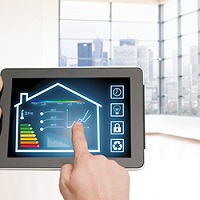IHS Markit forecasts that within the consumer video surveillance market, edge-based analytics (computation within the device rather than on the cloud) will continue to be popular for the next two to three years before cloud-based analytics begin to take over. A variety of new analytical functions are being developed and applied to video surveillance. The majority of these new analytical functions continue to focus on refining what should and should not be recorded in order to save bandwidth and storage space. Motion detection, event recording, facial recognition, and object awareness are just a few of the technologies in which analytics are being applied. However, each of these functions still often plague users with false alarms and unwanted alerts because many algorithms require further refinement. Introducing new analytics to hardware, however, presents risks: for example, if the analytics does not work optimally, it can quickly degrade a user’s experience, potentially rendering an otherwise quality product unusable.
IHS Markit forecasts that edge-based analytics (computation within the device rather than on the cloud) will continue to be popular for the next two to three years before cloud-based analytics begin to take over. The cloud’s vastly superior computational power allows for more complex functionality than edge-based analytics. Currently, the main barrier to cloud-based analytics is the IT infrastructure required to transmit footage to the cloud. For example, if latency is too high, the effectiveness of the system can become severely hindered. In two to three years, however, IHS expects that network speeds and wireless compression rates will have improved to a point where they can handle the demands of cloud-based analytics.
In addition to cloud-based analytics solutions, IHS expects artificial intelligence (AI) to play a larger role in home surveillance management as we move closer to 2020. Once consumer video companies begin working closer with brands like Google and Apple, they should be able to leverage their existing consumer AI brands to assist in the management of surveillance systems through mobile applications. In five years, for instance, it is possible that an end user could simply ask Siri to check their home surveillance system’s facial recognition log and report back with information on whether or not the user’s children have arrived home from school.








